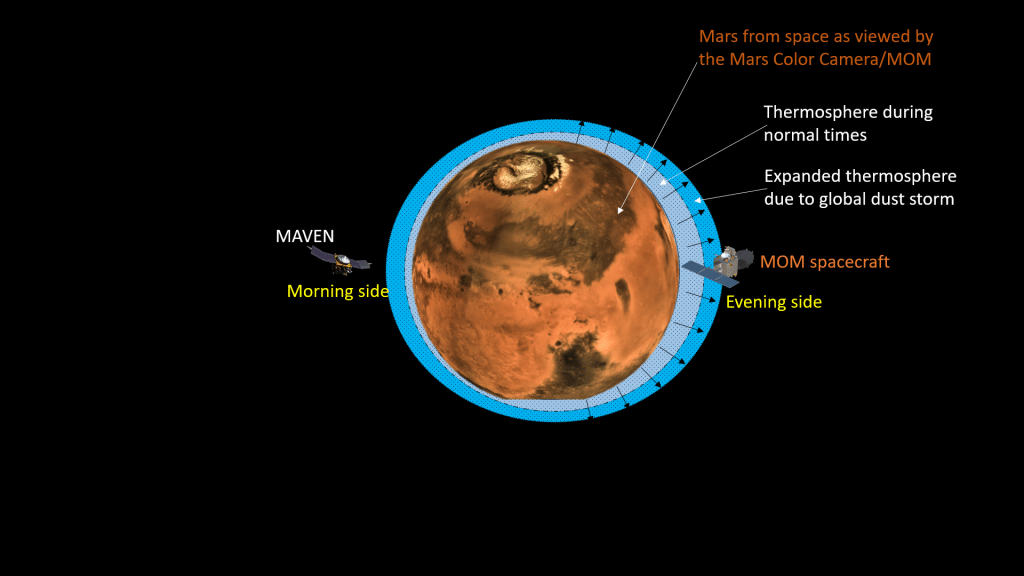
A recent study published by ISRO based on the findings of Mangalyaan and MAVEN, shows the effects of a global dust storm on Mars’ atmosphere. One of the effects is the acceleration of the red planet’s atmospheric escape, which is the loss of atmospheric gasses to outer space.
The study has been published in the Journal of Geophysical Research: Planets. ISRO has explained this study in their recent post. The data collected by MOM or Mangalyaan suggests that the global dust storm, which is a natural dynamical meteorological phenomena occurring on Mars, has implications on the planet’s atmosphere.
Mars Orbiter Mission (MOM), also known as Mangalyaan, was first launched on 5 Nov 2013, and it has been orbiting Mars since 24 Sep 2014. The space probe was meant to last only for about 6 months, but it has far outlived it’s expected lifespan.
A global dust storm which started growing on Mars during the first week of June 2018, had grown to its mature phase by the first week of July 2018. During this time, the space probe descended into Mars’ thermosphere which lies between the altitudes of 100 and 200 km. The space probe measured the neutral densities of the thermosphere on the evening side, using the Mars Exospheric Neutral Composition Analyser (MENCA) instrument, which is a mass spectrometer on MOM.
The analysis of these measurements have shown that the red planet’s atmosphere is undergoing warming and expansion, while the dust storm rages on its surface. The measurements show an increase in the neutral densities (which suggests expansion of the atmosphere). This was also confirmed by the measurements taken by NASA’s Mars Atmosphere and Volatile Evolution mission (MAVEN), which was simultaneously measuring the Martian atmosphere on the morning side.
A planet’s atmosphere is held in place by its gravitational force. All planets lose their atmospheres at a certain rate. The rate of loss depends on the planet’s size (which dictates its gravitational force), and the atmospheric temperature. The heating and expansion of the Martian atmosphere means that the outer parts of the atmosphere quickly reach the exobase altitude, which lies at about 220 km from Mars’ surface. Any hot gases that are above the exobase altitude can easily rise to higher altitudes and consequently, escape to the outer space.
According to ISRO’s post, these findings indicate that “the 2018 global dust storm resulted in enhanced escape of the Martian atmosphere.”
ISRO says that this study exemplifies the utility and potential of space probes like the Mars Orbiter Mission or Mangalyaan, and multi-spacecraft measurements in exploring the planetary atmospheres referring to MAVEN’s contribution to this study.
It is also true that studies and space missions like these help us better understand the neighboring planets. Studying and understanding Mars’ atmosphere can be highly beneficial: it can give us a better understanding of our own atmosphere and perhaps also provide insights into how we can alter Mars’ atmosphere to make it habitable. It may not be a huge discovery, but it is a huge step in the right direction.
https://ift.tt/3mgSTBT
Click the link below to Subscribe via email ..
https://ift.tt/2FOLq9L






0 Yorumlar